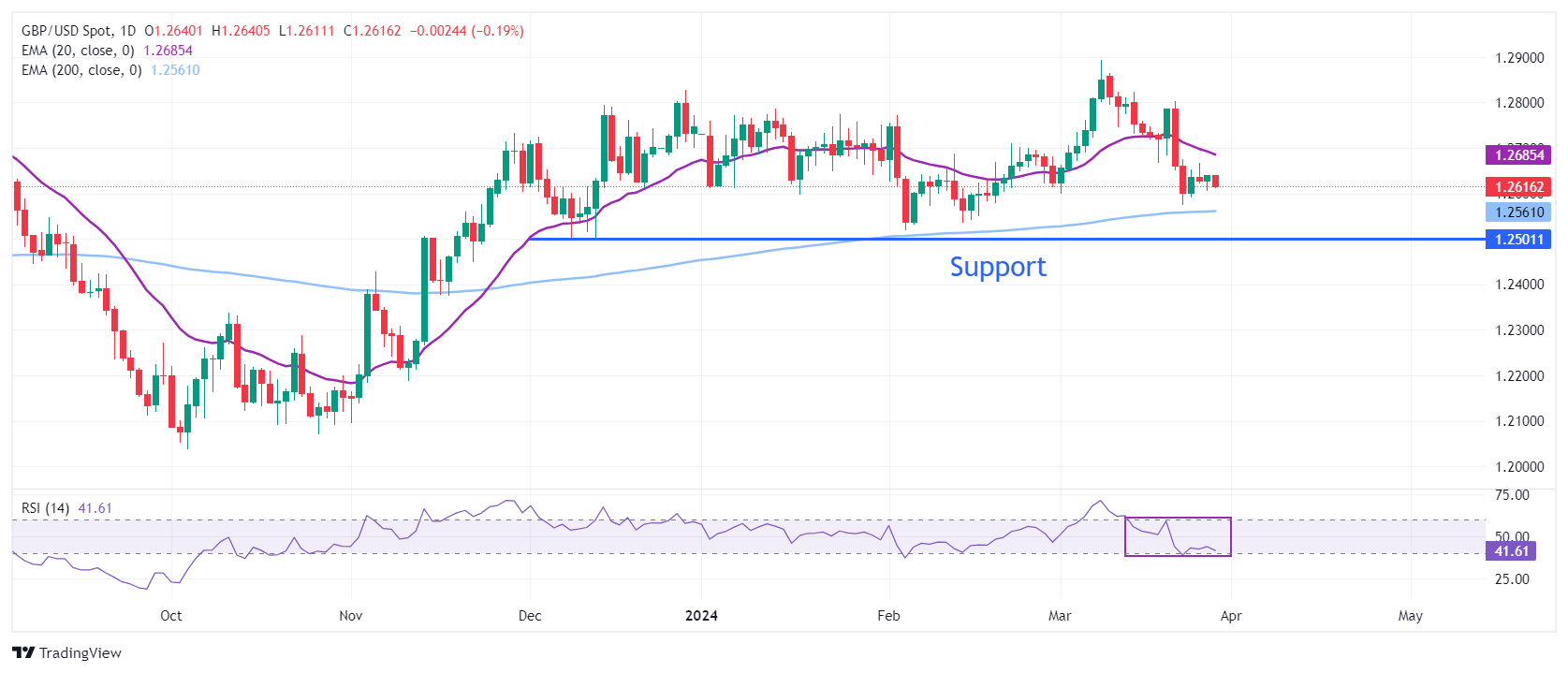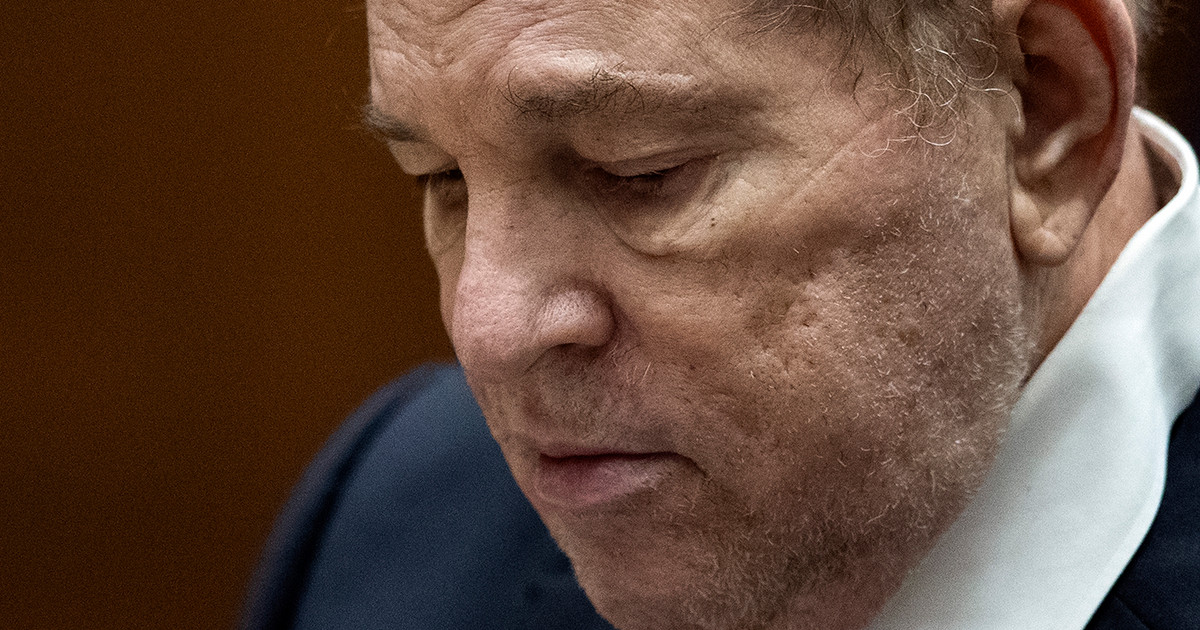- The British Pound rises above 1.2600 against the US Dollar ahead of February US PCE Core Inflation data.
- The Fed's preferred inflation gauge could provide clues about the start of the rate cut cycle.
- Weak February inflation data from the UK has raised expectations of BoE rate cuts in June.
The British pound (GBP) recovers 1.2640 against the US dollar in the early stages of Thursday's session in New York. More broadly, the GBP/USD pair is struggling to find direction as investors wait for new signals on when the Bank of England (BoE) will begin cutting interest rates. UK inflation has dropped significantly, but BoE policymakers are expected to take a cautious approach as an early rate cut could reignite price pressures again.
Investors expect the BoE to start cutting rates from the June meeting. Expectations have been boosted by the sharp easing of inflation in February. Furthermore, no BoE policymaker sees the need for further rate hikes, indicating that the current level of interest rates is sufficiently restrictive. The British pound typically weakens when investors expect the BoE to begin cutting interest rates soon.
Meanwhile, the United Kingdom's Office for National Statistics (ONS), published on Thursday, revised its estimates of the Gross Domestic Product (GDP) for the fourth quarter of 2023, confirming that the economy contracted by 0.3% in the October-December period .
The US dollar gives ground ahead of US personal consumption expenditure (PCE) price index data for February, which will be released on Friday. This measure, which measures core inflation, is expected to have increased by 2.8% annually.
Daily summary of market movements: British pound recovers intraday ground, while US dollar retreats
- The British pound consolidates in a tight range, slightly above 1.2600, as investors seek fresh guidance on the outlook for UK interest rates. Bank of England policymakers disagree on rate cuts. On Wednesday, Jonathan Haskel stated in the Financial Times that rate cuts should be “a long way off,” adding: “While the drop in headline inflation is very good news, it is not informative about what we are really worried about. What we really care about is persistent and underlying inflation.
- Jonathan Haskel's comments suggest he has little confidence that progress will be made in bringing inflation down to 2%, and that rate cuts remain off the table. By contrast, BoE Governor Andrew Bailey said in a recent interview with the Financial Times that market expectations of two or three rate cuts this year are not “unreasonable.” As for the inflation outlook, Bailey said: “We don't see much persistence.”
- Currently, market expectations for BoE rate cuts have been brought forward to the June policy meeting, up from the previous forecast in August, after UK inflation softened more than expected in February. Apart from that, the BoE's slightly dovish outlook on interest rates in last week's monetary policy statement has boosted expectations of rate cuts in June.
- Meanwhile, market sentiment is slightly risk-off as S&P 500 futures trade lower in the European session on Thursday. The US Dollar Index (DXY) rises to 104.40, within touching distance of its monthly high of 104.50, amid uncertainty over US Core Consumer Price Index (PCE) data for February.
Technical Analysis: Sterling Recovers Strongly Above 1.2640

The British Pound is trading in a tight range around 1.2600. The GBP/USD pair looks vulnerable around 1.2600 as the 20-day EMA at 1.2690 has turned lower. The asset is slowly declining towards the 200-day EMA, which is trading around 1.2564. On the downside, horizontal support from the December 8 low at 1.2500 would provide support to the British Pound bulls.
The 14-period Relative Strength Index (RSI) is near 40.00. A bearish momentum would be triggered if the RSI falls below this level.
Pound Sterling FAQ
What is the Pound Sterling?
The British Pound (GBP) is the oldest currency in the world (886 AD) and the official currency of the United Kingdom. It is the fourth most traded currency unit in the world, with 12% of all transactions and an average of $630 billion per day, according to 2022 data.
Its key currency pairs are GBP/USD, also known as “Cable”, which represents 11% of the forex market, GBP/JPY, or the “Dragon” as it is known to traders (3%), and EUR/GBP (2%). The pound sterling is issued by the Bank of England (BoE).
How do Bank of England decisions influence the Pound Sterling?
The most important factor influencing the value of the Pound Sterling is the monetary policy decided by the Bank of England. The Bank of England bases its decisions on achieving its main objective of “price stability”, that is, a stable inflation rate of around 2%. Its main tool to achieve this is the adjustment of interest rates.
When inflation is too high, the Bank of England tries to contain it by raising interest rates, which makes access to credit more expensive for individuals and companies. This tends to be positive for the GBP, as higher interest rates make the UK a more attractive place for global investors to park their money.
When inflation is too low, it is a sign that economic growth is slowing. In this scenario, the BoE will consider lowering interest rates to make credit cheaper, so that companies borrow more to invest in projects that generate growth.
How does economic data influence the value of the Pound?
The published data gauges the health of the economy and may influence the value of the Pound sterling. Indicators such as GDP, manufacturing and services PMIs, and employment can influence the direction of the Pound.
A strong economy is good for the British pound. Not only does it attract more foreign investment, but it may encourage the Bank of England to raise interest rates, which will directly strengthen the Pound. Otherwise, if economic data is weak, the pound is likely to fall.
How does the trade balance affect the Pound?
Another significant data for the pound sterling is the trade balance. This indicator measures the difference between what a country earns from its exports and what it spends on imports during a given period.
If a country produces highly sought-after exports, its currency will benefit exclusively from the additional demand created by foreign buyers wishing to purchase these goods. Therefore, a positive net trade balance strengthens a currency and vice versa for a negative balance.
Source: Fx Street
I am Joshua Winder, a senior-level journalist and editor at World Stock Market. I specialize in covering news related to the stock market and economic trends. With more than 8 years of experience in this field, I have become an expert in financial reporting.






